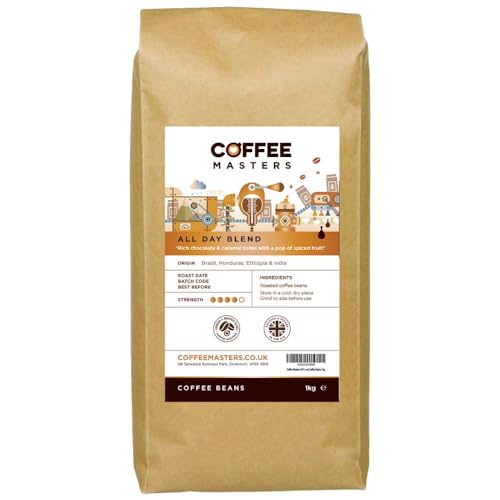Are You Responsible For The Coffee Beans Types Budget? 10 Unfortunate Ways To Spend Your Money

Coffee Bean Types: Arabica, Robusta, Liberica, and Excelsa
You've probably heard that different types produce distinct flavors. Find out more about four of the most well-known varieties: Arabica, Robusta, Liberica and Excelsa.

Excelsa beans are a kind of Liberica that is grown only in Southeast Asia. They have a fruitier, tarter flavor profile and are frequently used in blends of beans to give them added depth.
Arabica
Arabica is the world's most popular coffee accounting for 75% of all global coffee beans produced. Arabica beans are milder and have a sweeter flavor than Robusta and are available in a variety profiles. The aroma and taste of a coffee may vary widely depending on the growing conditions and processing methods used to produce it.
The word "coffee" actually derives from the Arabic word for berry and coffee beans are actually fruit seeds which grow inside bright red berries. It is believed that ancient Ethiopian shepherds discovered that their goats became energized after eating these berries, and the cultivation of coffee soon spread across the world.
Coffee beans can grow at high altitudes, and thrive in cold temperatures and lots of rain. This is one of the reasons that Arabica is regarded as the best-tasting type of coffee.
Many specialty coffee shops and roasters are focused on the ethical source of their arabica beans, by emphasizing fair wages for farmers and sustainable growing practices. These companies blend arabica beans to create unique coffees that can be used in different brewing methods. Blending can be used to control the aroma, flavor and body of the coffee and is frequently preferred to achieve a balanced and consistent taste that appeals to a larger market.
published here are the second most coveted type of coffee bean around the world. They contain more caffeine per bean than Arabica, and are more resistant to pests and disease. They also contain more chlorogenic acids, which are naturally-occurring antioxidants. These acids can cause oxidation during the coffee's brewing process and cause undesirable flavors.
The plant itself is more durable than arabica and is able to grow in less favorable climate conditions and at lower elevations. It can tolerate higher temperatures and thrives in direct sunlight. It produces more coffee per plant and is growing faster than arabica. This makes it a economical crop to cultivate.
While it may seem counterintuitive the fact is that arabica and Robusta beans are often blended together to create coffee blends. If you've seen the names of countries like Uganda or Kenya listed on a bag of coffee then it's likely that there's a bit of robusta as well.
The majority of roasters make use of a mix of arabica and coffee beans to cut costs and maintain the quality. To ensure the integrity of the flavor you must select the best quality beans from a trusted source. The best way to achieve this is to purchase your beans directly from the farmer.
Liberica
Liberica beans have a shape similar to a football which is why they are different from other types of coffee beans. They have an aroma that is fruity, floral and smokey. They are often paired with other coffee beans to give an extra, stronger flavor.
Liberica coffee beans are grown in West Africa and Malaysia (Borneo) as and in Southeast Asia. They can be found at low altitudes and tolerate humid, hot climates. They also have a better resistance to disease than Arabica and Robusta.
These characteristics make them ideal for home-growing. Online, you can buy the seeds from many sources. However, it is best to buy the beans from local producers to ensure quality. The ideal conditions for the cultivation of Liberica coffee plants are fertile deep volcanic soils that have moderately acidic pH and adequate annual rainfall.
Another type of coffee bean is Excelsa which was originally thought to be a separate species, but was later re-classified to be an alternative to Liberica. These oval-shaped coffee beans are grown on large coffee plants that can reach 20-30 feet in height at medium altitudes. Their distinctive taste is tart and sour, which makes them a popular choice for house blends. They are also less heavy on scent and caffeine than Arabica and Robusta and Robusta, yet they have a distinctive richness of flavor.
Excelsa
Although they're the fourth most sought-after kind of coffee beans, Excelsa beans aren't quite as easily accessible as Arabica or Robusta. They were actually considered to be a different species of coffee until 2006 when they were reclassified to become a synonym for Coffea Liberica var. dewevrei. These days, they're mostly grown in Southeast Asia and account for 7% of the world's coffee production. The coffee beans are shaped in the shape of teardrops and possess a dark, eerie taste. They're often used in blends to add extra body and a delicious, tart, ripened fruit flavor.
Arabica beans are by far the most sought-after and are renowned for their sweeter flavor. They thrive in tropical, warm climates and high altitudes. They have a little acidity. If properly roasted and brewed they may be flavored with notes of nuts, chocolate, or even fruit.
Robusta is the second most popular coffee around the world. It makes up around 40% of all coffee consumed globally. Robusta is rounder and smaller, yet they contain twice the amount of caffeine as Arabica. They also taste bitterer than the other two varieties and have an earthy and woody taste.
Once you've mastered the four most popular types of coffee beans you can now choose your ideal coffee. If you're looking for a smooth and delicate taste, go for an arabica or a blend of robusta and arabica beans.
